Insightful newsletter of Drishtikone: Issue #133 - The Heavens are Falling
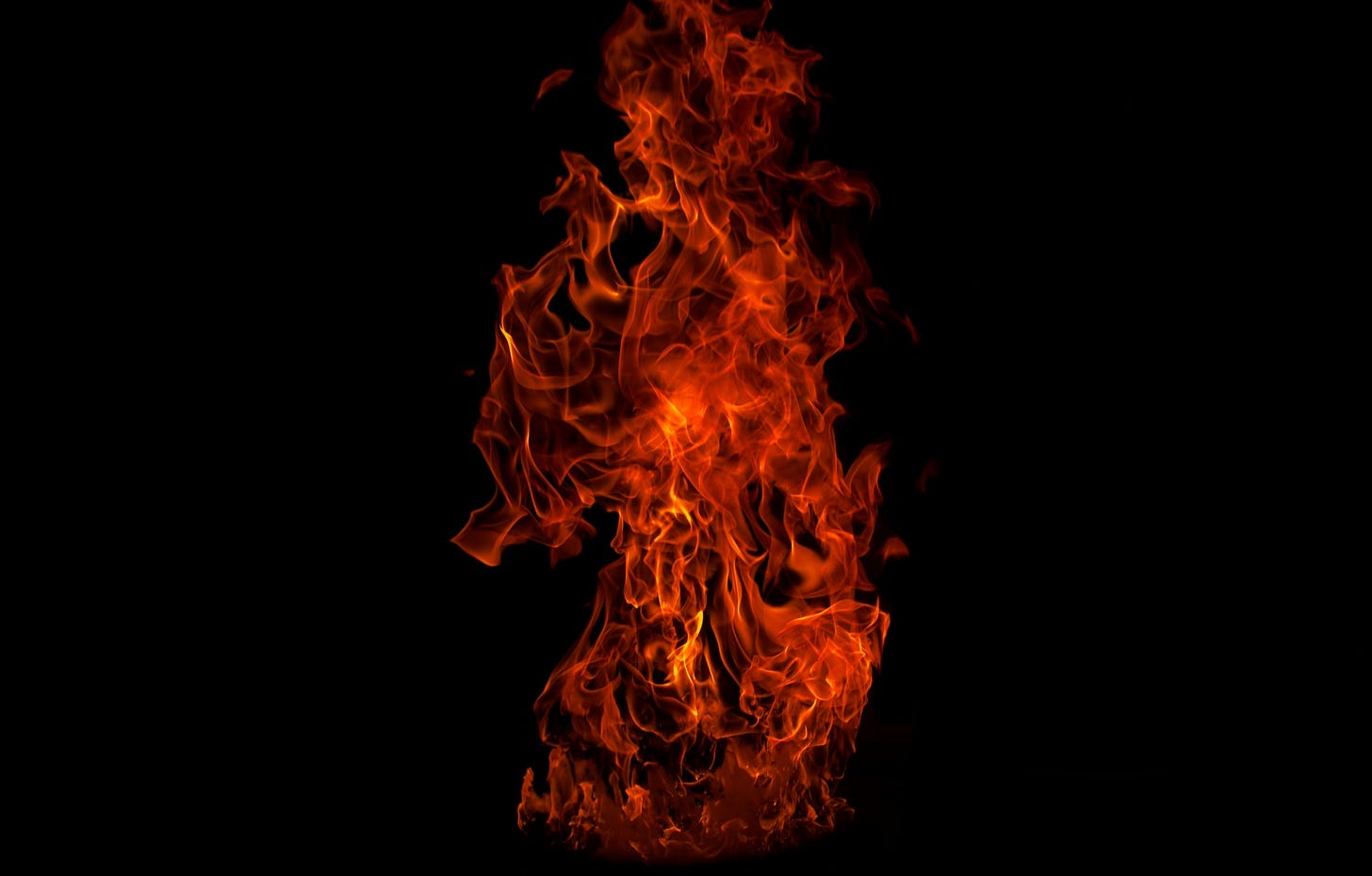
(Photo by Anthony Rao on Unsplash)
“Unfold Yourself within me, O Lord. Grant me the strength of character through Right-Mindedness. Through the holiest spirit, O Lord, grant me goodness as a reward for prayer. Grant me a life full of vigour through Truth, and may the pure Mind look after me.” The Avesta, Zoroastrianism (Yasna 33:12)
Heavens have been really sold well. From white milky thighs of virgins to angels and music and peace. Every assortment has been promised.
All you have to do is believe in some fairy tale that won’t even pass the sniff test of a 3-year-old.
The lure of the heavens after death is achieved on the dilapidated corpse of this life. A life that could have been graceful, loving, seeking, blissful, and joyful. Instead, it hated everything beautiful - music, art, dance - and had its worth measured by how many it hated. Hatred for everyone who couldn’t take your fairy tale seriously or swear by the many nuances you invented.
When humanity strikes the hearts of those alive - heavens break apart. They fall down.
The hollow promises of the sensual and the sensory in the disembodied life seem as alluring as that of a rainbow to the blind!
The heavens are falling!
the rapid quiet transformation within Iran and the Middle East to Zoroastrianism
When I travel, I have regular discussions with the cabbies in a city. One had seen an interesting phenomenon when the limo is owned by an Iranian (btw lots of limo companies in the US are owned and operated by Iranians).
Whenever one tried to talk to an Iranian, it was very common that they somehow always said one thing “We were not Muslims, we were Zoroastrians. Arabs converted us.” This happened whenever I would suggest that Persia had a long history.
This sentiment has been shared by men/women from Iran in different cities and different settings. Swarajyamag also shares a story of such sentiments.
“Converting back” to Zoroastrianism, as many refer to the process of rediscovering their roots, has encouraged a view of Islam as an alien Arab faith that was imposed on unwilling Persians during the Muslim conquest of the seventh century. (Source)
When Ali inquired about the traditional Persian faith, he came to realize that his family was from a Zoroastrian priestly lineage. That pushed him to know more. And finally underwent the navjote ceremony to align himself with the Zoroastrian faith.
He learned about the three principles propagated by Zoroaster: Humata, Hukhta, and Hvarshta, “Good Thoughts, Good Words, and Good Deeds” in Avestan, an ancient Iranian language. He learned that fire, which plays such a central role in Zoroastrian religious ceremonies, represents the divine light of wisdom. Then he decided to undergo the Navjote, an initiation ceremony into the faith that is similar to a Bar Mitzvah. (Source)
An experience that left him in tears.
What happened to Ali, has been the biggest fear of the Mullahs in Iran all the time.
Similarly, the Stylist magazine shares another story of Duya Ahmed Gadir from Iraq this time.
“I was raised Muslim, but I converted to Zoroastrianism last year,” Duya explains, sitting cross-legged on a mattress in jeans and scuffed platform sandals at her home in Kalar, a small city in the autonomous Iraqi region of Kurdistan, three hours north of Baghdad. (Source)
Richard Foltz shares his analysis on how the Kurds are re-examining Islam in his article “The "Original" Kurdish Religion? Kurdish nationalism and the false conflation of the Yezidi and Zoroastrian traditions.” As Foltz says - the re-examination of Islam amongst the Kurds (and it seems to be similar to the Iranians in general) is also a reflection of the antagonism to the Arab imperialism - which they equate with Islam itself. In their eyes, Islam is equal to Arab imperialism.
The religion of the Yezidi Kurds, which has often been inaccurately characterized as “devil-worship,” has been claimed by Kurdish nationalists since the 1930s as the “original” religion of the Kurdish people. It has likewise been asserted that the Yezidi faith is a form of Zoroastrianism, the official religion of Iran in pre-Islamic times. These notions have won official support from most Kurdish political organizations and have broadly penetrated Kurdish society. The identification of Yezidism with Zoroastrianism is historically inaccurate, however, and should be seen as a product of modern nation-building ideology. Sentimental attachment to Yezidism and/or Zoroastrianism among Kurds today is best understood in most cases as a political rejection of Islam and its perceived Arab connections, rather than in terms of genuine devotional commitment.
The above discussion was based more on anecdotal information. Do these anecdotal pointers amount to a larger social transformation within the Shiite/Middle East community of Iranians, Iraqis, and the Kurds?
studies show Iranians are changing right under the Ayatollah regime!
A research institute, the Group for Analyzing and Measuring Attitudes in IRAN (GAMAAN), conducted an online survey with the collaboration of Ladan Boroumand, co-founder of the Abdorrahman Boroumand Center for Human Rights in Iran in June 2020. The results of the survey are very significant. (Source)
Compared with Iran’s 99.5% census figure, we found that only 40% identified as Muslim. In contrast with state propaganda that portrays Iran as a Shia nation, only 32% explicitly identified as such, while 5% said they were Sunni Muslim and 3% Sufi Muslim. Another 9% said they were atheists, along with 7% who prefer the label of spirituality. Among the other selected religions, 8% said they were Zoroastrians – which we interpret as a reflection of Persian nationalism and a desire for an alternative to Islam, rather than strict adherence to the Zoroastrian faith – while 1.5% said they were Christian.
One has reasons to believe that the percentage which will go back to Zoroastrian faith within Iran if there was no theological regime would be much higher than 8%.
In this very interesting paper titled “The Revival of Nationalism and Secularism in Modern Iran” by Pejman AbdolMohammadi of LSE’s Middle East Center writes. (Source)
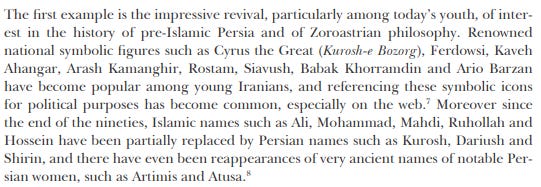
The names have started changing within Iran. That is the first change. Just as the change in Pakistan towards religious extremism was accompanied by a change of greeting in the daily life of people from “Khuda Hafiz” to “Allah Hafiz” due to force from Zia-ul-Haq and the Saudi money.
The promotion of "Allah hafiz" first began in the 1980s under the rule of General Zia-ul-Haq when Pakistan was involved in the US- and Saudi-backed jihad against the Soviet occupation of Afghanistan. According to some reports, "Allah hafiz" was first used in public in 1985 by a well-known TV host on the state-run PTV. However it would be years later that the greeting took off. (Source)
Now, Allah Hafiz is the norm in that society.
Until about 10 years ago "Khuda hafiz", which means "God protect you", was the phrase commonly used to say goodbye. But, in the past decade, "Khuda hafiz" began to be overtaken by a new term "Allah hafiz". Now, "Allah hafiz" is used by everyone from religious clerics to fashion models and the country's top TV anchors. (Source)
Sometimes, just these small changes in a society hide a much bigger transformation that is often overlooked.
So when this paper by Pejman AbdolMohammad shares that a large number of Iranian youth is now turning to Zoroastrianism, it seems credible.
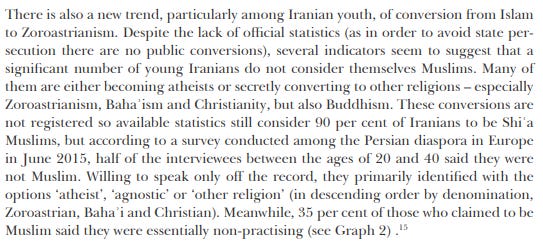
What is most interesting is that even though GAMAAN says that only 8% of the people identified themselves as Zoroastrians, in LSE’s interviews, that was 25%!
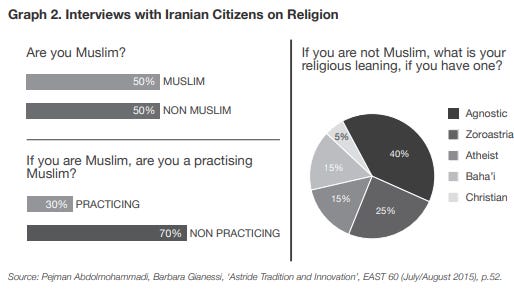
Quite apparently, these surveys do not have an authoritative percentage for any of these changes happening within Iranian society, but they are critical in how they show the trends.
The move away from Islam within Iran is clear. We have a scene there where 60% of the respondents in the GAMAAN survey say they do not fast or do namaaz anymore.
Over 60% said they did not perform the obligatory Muslim daily prayers, synchronous with a 2020 state-backed poll in which 60% reported not observing the fast during Ramadan (the majority due to being “sick”). In comparison, in a comprehensive survey conducted in 1975 before the Islamic Revolution, over 80% said they always prayed and observed the fast. (Source)
The change of people going out of Islam (religious category) is increasing as the respondents become younger. The next generation of Iranians may actually be strongly predisposed to Zoroastrianism.
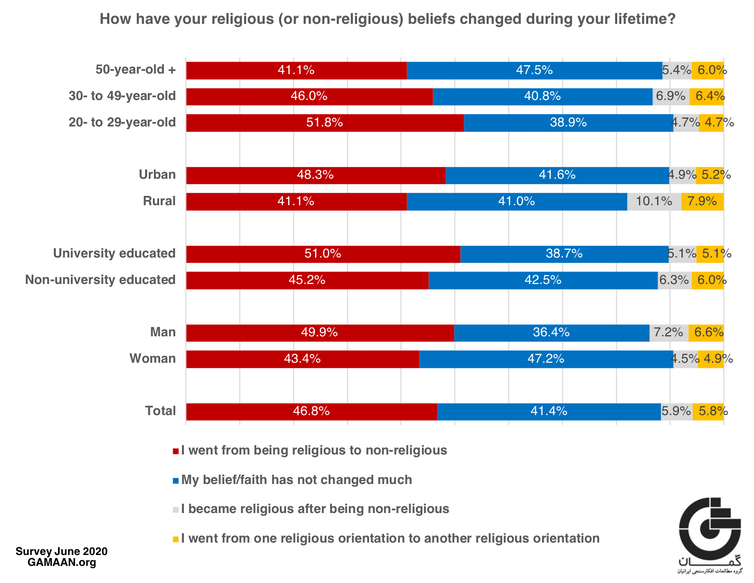
If only the Parsis could push for more information dissemination and some priests taking a lead on sharing their spiritual and religious heritage in the land of their birth, this change could become an avalanche!
a slice of Indian history in London
London has a lot of history related to Indian colonial times. Many of our would like to visit the places where some of the stalwarts had stayed or something related to the Indian freedom struggle had happened. Something that we do not do within India itself.
I had a brief exchange with one of our readers - Mr. Bipin Patel Ji, who shared with me about the two houses which are linked to the Indian freedom struggle in London. Mr. Vasudev Godboleji runs tours within London of such places (Email: v.godbole3@yahoo.co.uk / Phone: 01234 357388). His itinerary includes the following:
University College London. Madanlal Dhingra (the idol of Shaheed Bhagat Singh) studied for Diploma in Civil Engineering in this college. He shot and killed Sir Curzon Wyllie in 1909.
House in Highgate of Shyamji Krishna Varma. He offered a scholarship to Savarkar.
House where Veer Savarkar lived (1906-09).- This was the India House. [Please see the pictures of the house below]
House where Tilak once lived (1918-19) [Please see the pictures of the house below]
Pentonville Prison: Madanlal Dhingra (1909) and Shaheed Udham Singh (1940), went to the gallows here. Both were denied cremation according to Hindu rites and buried in coffins within prison premises.
Gray’s Inn where Savarkar studied Law but was not called to the Bar for his freedom struggle activities.
Houses of Parliament: Savarkar came here to listen to the debate on the Indian Budget (1906). Tilak came here to testify on behalf of the Indian Home Rule League in wake of Montford reforms. (1919) In 1984 we paid homage to Savarkar in Committee Room No 10 during his birth centenary.
Present Foreign and Commonwealth Office: This was the India Office (1858-1947). Savarkar came here to meet Sir Curzon Wyllie. He also made his studies for the famous book. Indian War of Independence 1857, in the India Office Library. Lokamanya Tilak also visited the India Office Library in 1919
Caxton Hall - Savarkar held many of his public meetings here (1908-1909) - In 1919 Tilak condemned the Rowlatt Act and the Jalianwala Bagh Massacre. In 1940 Udham Singh avenged this massacre by shooting down Sir Michael Odwyer, Governor of Punjab at the time of the massacre, in the same hall.
House where Swami Vivekanand lived in 1896.
He and Mr. Vidhate were kind enough to send these pictures of the places where Veer Savarkar and Lokmanya Tilak had stayed during their visit to London.
Veer Savarkar stayed at 65 Cromwell Ave, Highgate, London N6 5HS. He had lived here from 1906 to 1909. The plaque was unveiled by Lord Fenner Brockway on 8 June 1985.
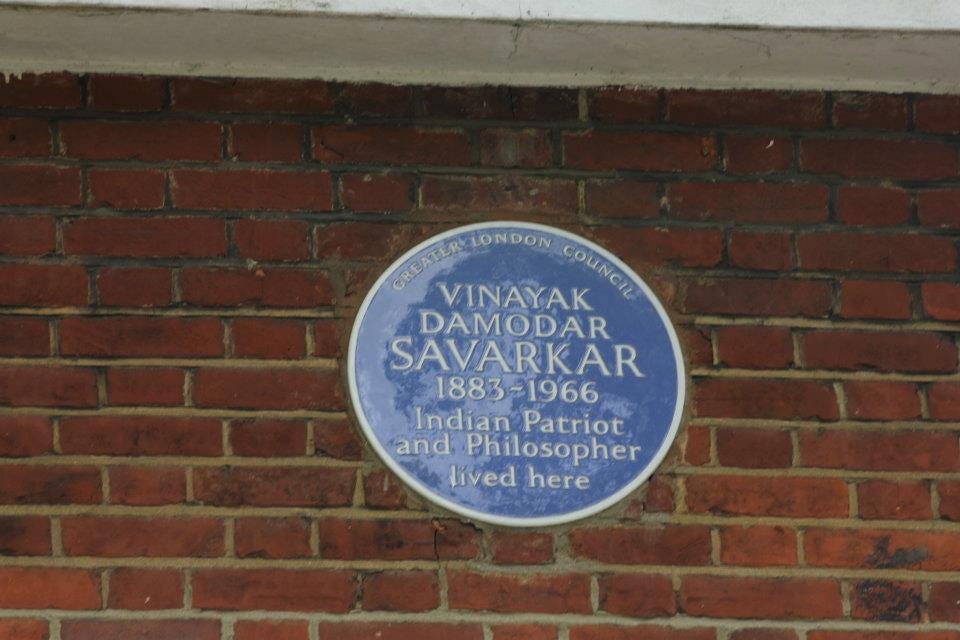
This is the house where Veer Savarkar stayed.
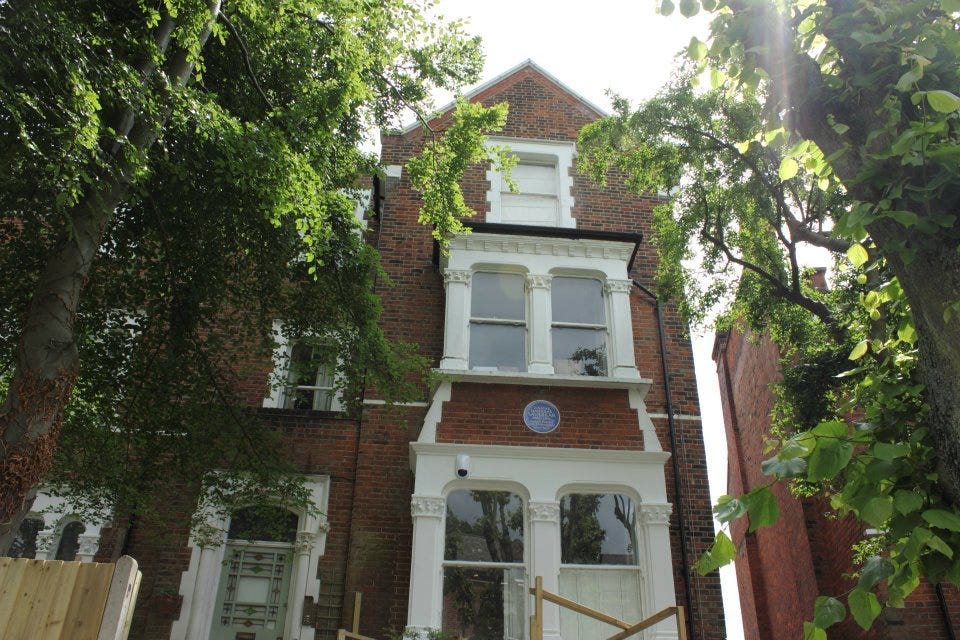
Lokamanya Tilak stayed at 10 Howley Place, London W2 1 XA between 1918-1919.
There is now a plaque outside the house where Tilak had stayed.
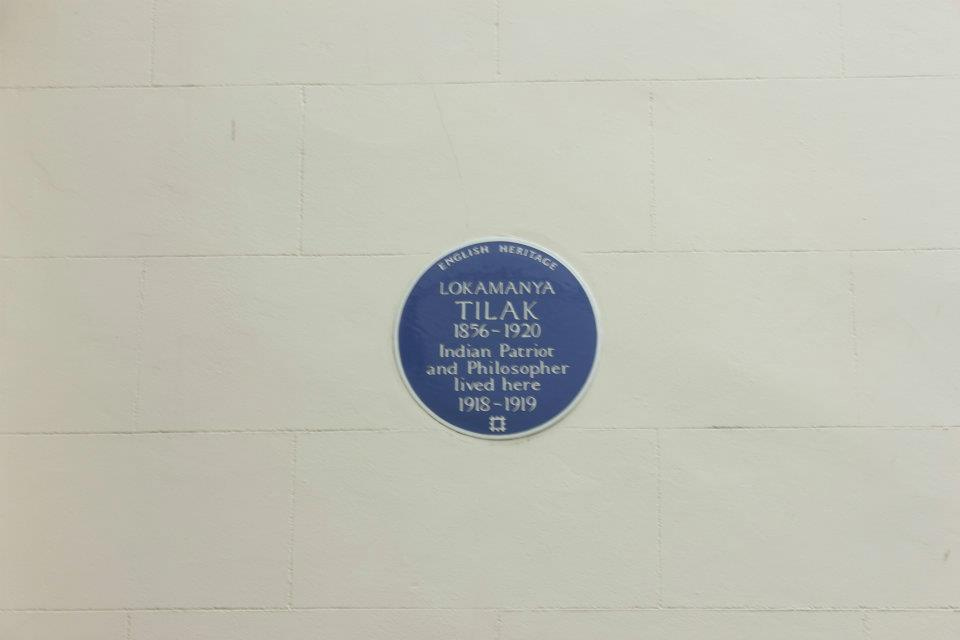
This is the house where Tilak had lived in 1918-1919.
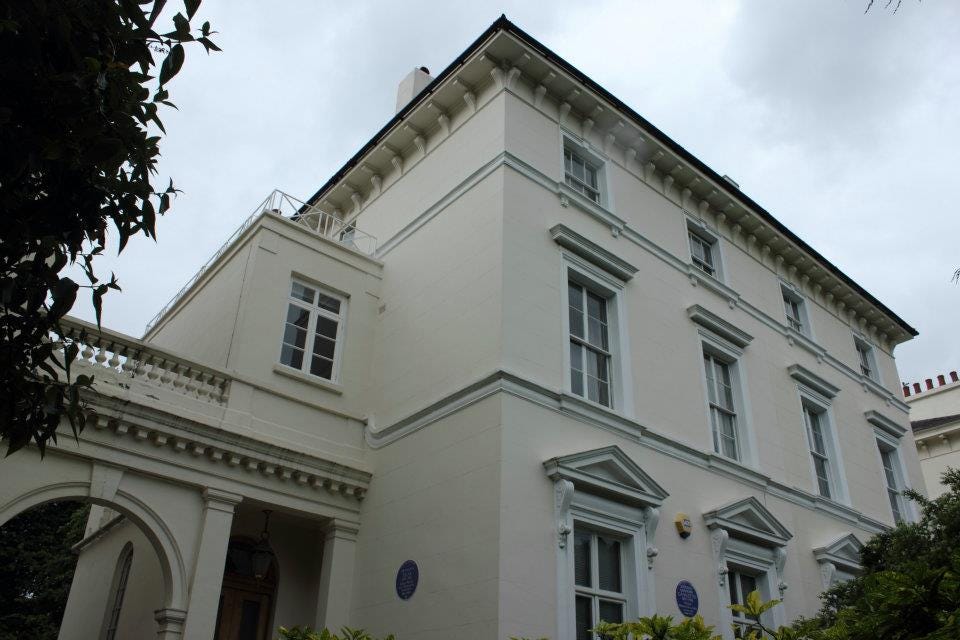
nota bene
Investigations into the drug angle in film actor Sushant Singh Rajput’s death has led the Narcotics Control Bureau (NCB) to large drug organizations and entities in Amritsar and Pakistan supplying cocaine and other hard drugs to Mumbai, and to Bollywood. (Source)
Hindi film industry in UP: Uttar Pradesh chief minister Yogi Adityanath on Tuesday held a virtual meeting with several leading members of the film fraternity over his proposal of a new film city in the state. Vivek Agnihotri and Anupam Kher were part of that meeting. (Source)
Feeding the Army: Residents of Chushul village in Ladakh are taking an arduous journey to a Himalayan mountain peak known as Black Top to provide supplies to the Indian Army engaged in a standoff with Chinese troops in a bid to safeguard their village from coming under Chinese control. (Source)
What is the mind?: Our mind cannot be confined to what’s inside our skull, or even our body, according to a definition first put forward by Dan Siegel, a professor of psychiatry at UCLA School of Medicine and the author of the 2016 book, Mind: A Journey to the Heart of Being Human. In fact, it extends beyond our physical bodies. (Source)
Indian heritage and environment
The Indian heritage in terms of our culture’s alignment with nature is very real and deep. Years of slavery and colonization have made us forget all that to a point where we have messed our environment up. Here is an excellent episode reminding us of our past and linking it to some amazing work being done in the current society. Very informative!
Support Drishtikone
If you consider our work important and enriching and would like to contribute to our expenses, please click on the button below to go to the page to send in your contribution. You can select the currency (for example, INR or USD, etc) and the amount you would like to contribute.
If you like this post - please share it with someone who will appreciate the information shared in this edition -
If you like our newsletter, please share it with your friends and family -



